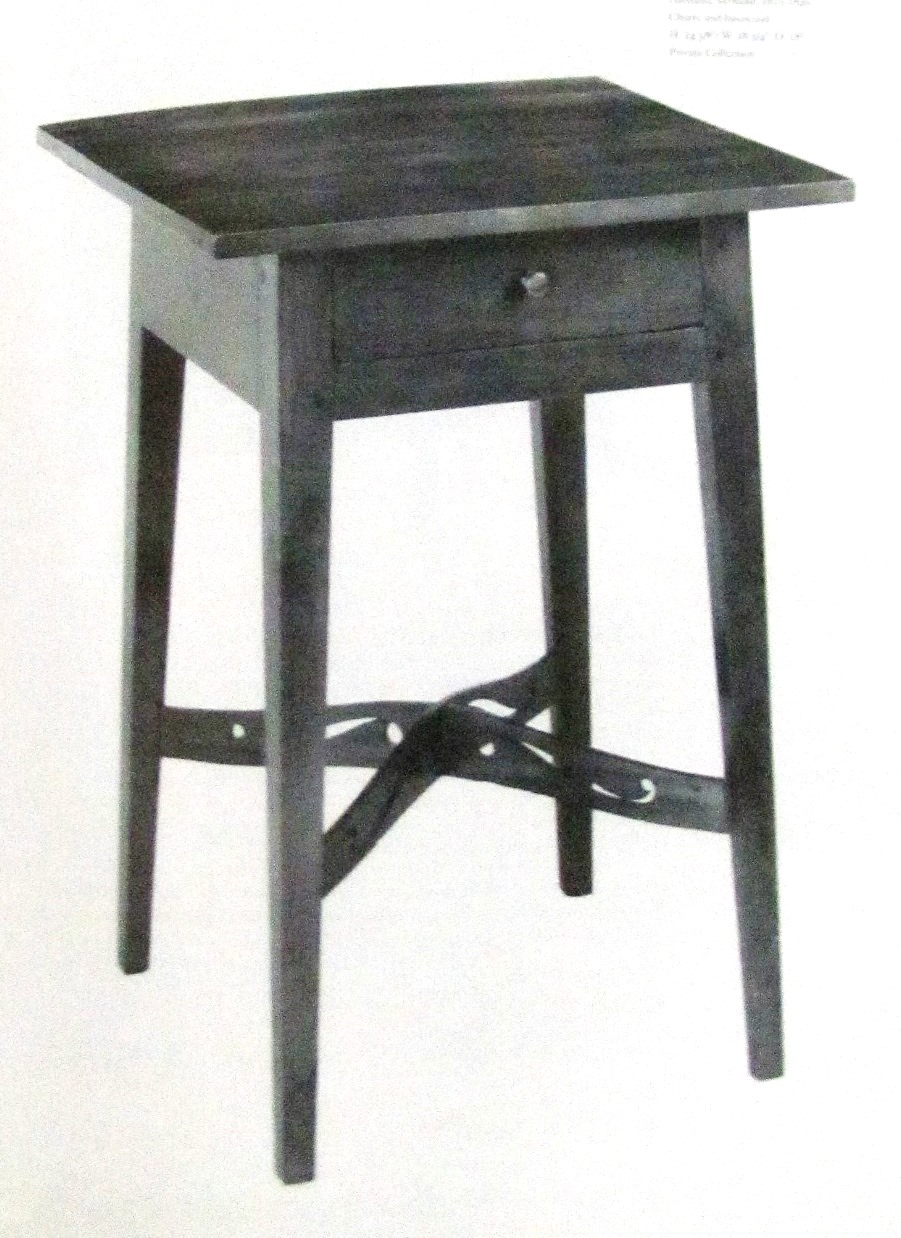I have spent a lifetime buying and selling antiques. There are countless stories I could tell.
Chelsea, Vt.

One day, 50 years ago, I was picking up in Chelsea. I had a lot to learn. I stopped at a place in the village, and knocked on the door. A rather thin, older gent came to the door. He let me in. Immediately, I’m greeted by an 18th century Queen Anne highboy. Beside it was a Hepplewhite light stand with drawer. More on this stand below.
I was out of my element for sure. In another room was a large painting, maybe 6 feet by 10 feet. It was huge.
I was in awe as I stood before it. It was a scene of Indians on horseback, driving a herd of buffalo over a cliff. In the left foreground was an Indian on horseback. He had just thrown his lance, striking a buffalo behind the shoulder. The buffalo looked back at the Indian with a Moby Dick eye. It was signed Frederic Remington.
The old gent told me he had been offered $10,000. He had a brother who lived in Woodstock, Vt. His brother had a Remington bronze.
More at my level of knowledge at the time, the old gent had some Victorian items. In his office was the best roll top desk. With the roll up, I could see numerous black pushbuttons. These buttons called different departments within the factory.
Above the desk, on the wall, was a large, colored lithograph for Hood’s Sarsaparilla. This was the old gent’s grandfather Hood’s desk.
The Hepplewhite light stand I did not understand so many years ago. I have only seen one such example in the 50 years since. It was made in a cabinetmaker’s shop, probably in Windsor or Hartland. It had splayed legs, canted drawer, and a stretcher from the left rear leg to right front leg and another from right rear leg to left front leg. The pierce carved stretchers were about eight inches off the floor. Where these stretchers intersected was a raised hump. These light stands are very rare today, only a handful are known. They date to 1810-1815.
About 40 years ago, I bought the remaining contents of the Attridge place on Woodbury Road in Springfield. In that estate, and kept by the family, was the only other example I have seen. It wasn’t for sale.
The photo with this article is from Ken Zogry’s book “The Best the Country Affords.” It is an example of a Hartland light stand. Ken and I collaborated some in the early 1990s.
I have learned a lot in 50 years. Today, I could market these antiques.
The round oak table
I was picking up in Orwell, Vt., about 40 years ago. I stopped at an old farmhouse. This place was rather run down. I was downstairs in the kitchen when I saw the round oak table.
Round oak tables came in different sizes. The least expensive had 42-inch diameter tops. They also came in 48, 54, and 60-inch tops. A larger top equaled more money. This table had a 54-inch top. It had a split pedestal with a center leg. When opened and leaves added, the split pedestal provided excellent support. This table had massive carved ball and claw feet, and a carved apron. It was one of the best.
It sat in their kitchen. Over the kitchen was an apartment. Coming down through the ceiling from the upstairs bathroom was a 4-inch diameter cast iron sewer pipe. They had cut a hole in the center of the table, through which the sewer pipe passed.
Can you imagine eating your breakfast when someone upstairs flushed the toilet? I bought the table and took it to Ron Davis in Perkinsville. He did a nice job restoring the top.
Instead of an old saying, I offer a song I learned in first grade.
“Christmas is coming, the goose is getting fat
Please put a penny in the old man’s hat
If you haven’t got a penny, a half penny will do
If you haven’t got a half penny, then God bless you.”